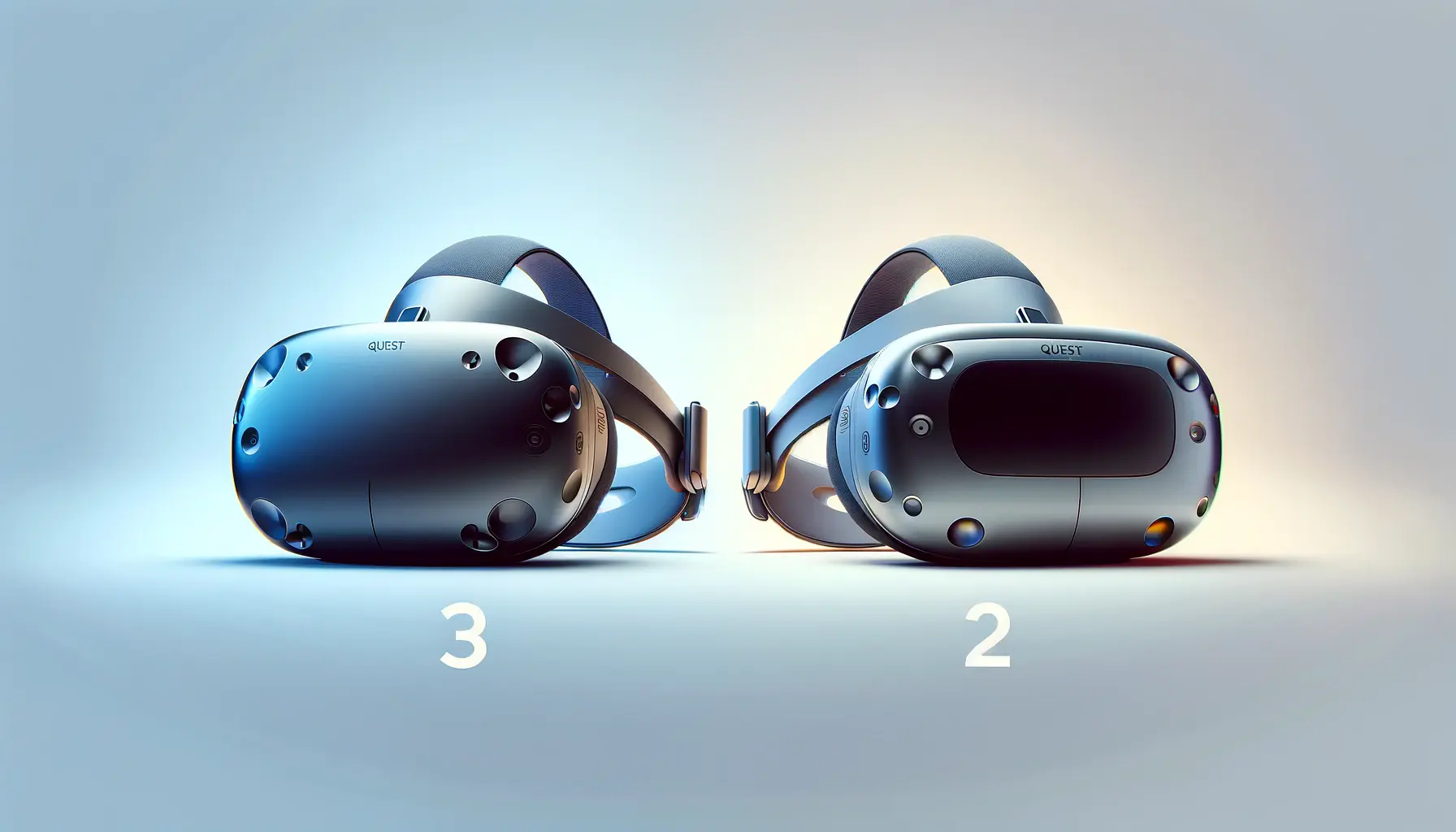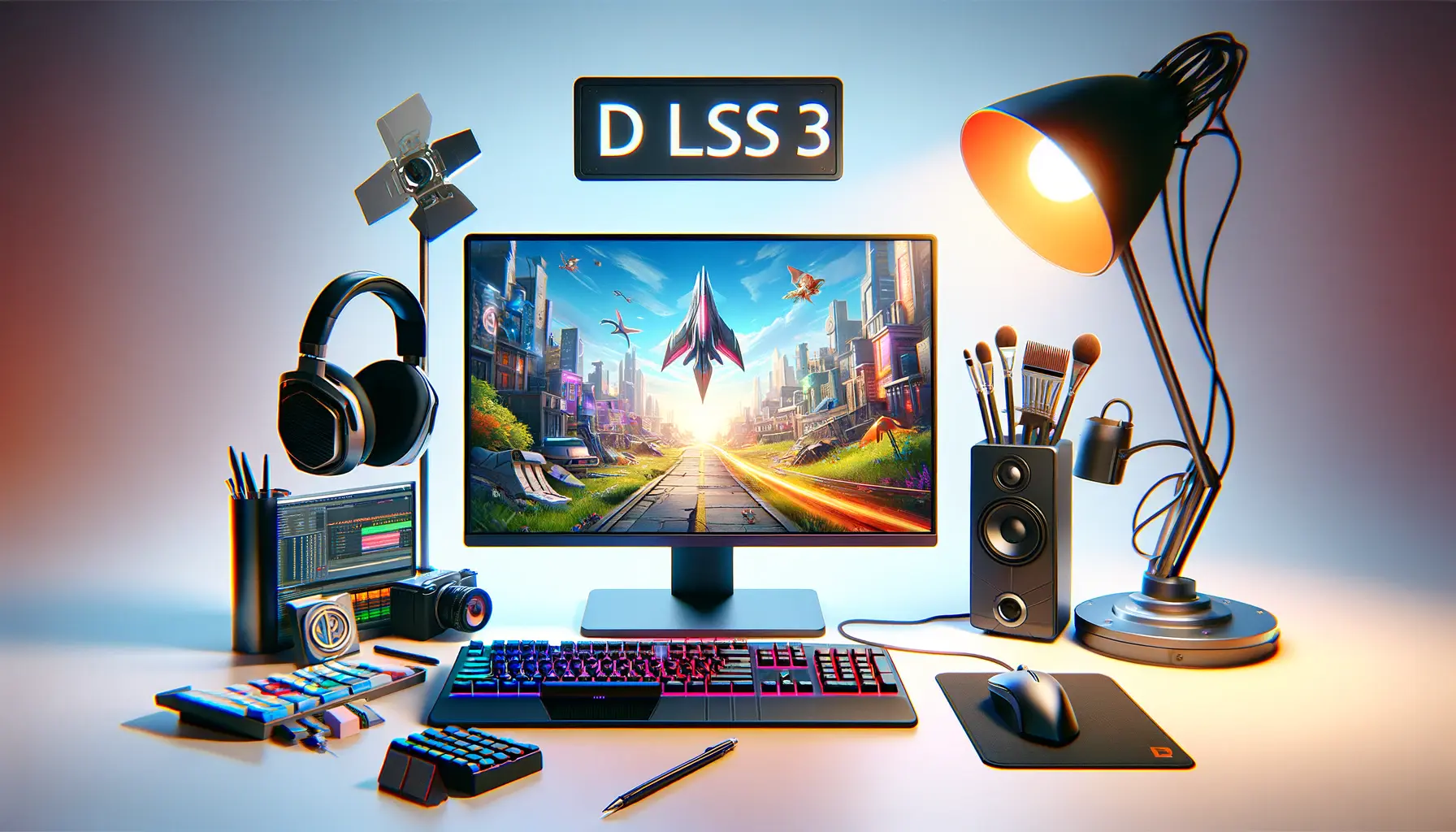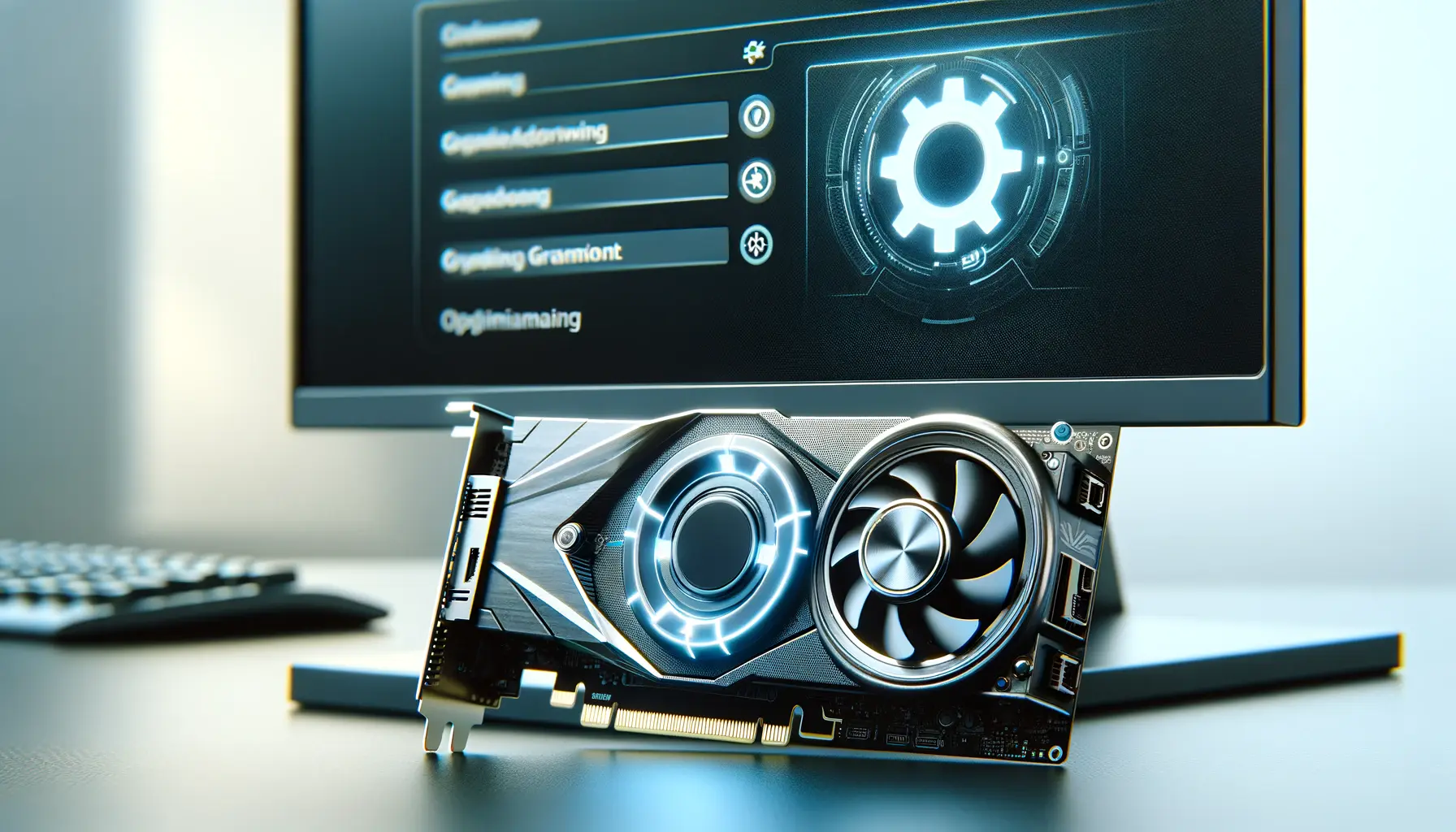The evolution of gaming graphics has been nothing short of revolutionary, with NVIDIA’s Deep Learning Super Sampling (DLSS) technology at the forefront of this transformation.
DLSS, a groundbreaking AI-powered technique, has significantly enhanced gaming visuals, offering gamers both stunning image quality and higher frame rates.
The introduction of DLSS 3 has sparked a new wave of excitement and curiosity within the gaming community, prompting a closer examination of how it compares to its predecessors.
DLSS technology utilizes neural networks to upscale lower-resolution images in real-time, making it possible to enjoy higher resolutions without the need for powerful hardware.
This not only improves game performance but also enhances visual fidelity, making for a more immersive gaming experience.
With each iteration, NVIDIA has refined the technology, making significant strides in both efficiency and image quality.
The latest version, DLSS 3, promises to redefine gaming graphics once again, boasting improvements that could set new standards for the industry.
- Introduction to DLSS Technology
- Key Features of DLSS 3
- Comparative Analysis: DLSS 3 vs. Previous Versions
- Impact of DLSS 3 on Gaming Performance
- DLSS 3’s Compatibility and Game Support
- Challenges and Considerations for Developers
- Future Directions of DLSS Technology
- Embracing the Future with DLSS 3
- DLSS 3 Frequently Asked Questions
Introduction to DLSS Technology
What is DLSS?
At its core, DLSS (Deep Learning Super Sampling) is an AI-driven rendering technology developed by NVIDIA.
It’s designed to boost frame rates by rendering fewer pixels and then using deep learning to upscale the images to the target resolution.
This process allows for smoother gameplay and higher quality visuals without the traditional performance penalty associated with higher resolutions.
DLSS achieves this by leveraging the dedicated Tensor Cores found in NVIDIA’s GeForce RTX series GPUs.
These cores are specifically designed to handle AI and machine learning tasks efficiently, making them ideal for the complex calculations required by DLSS.
The result is a dynamic balance between performance and image quality, enabling gamers to experience their favorite titles in stunning detail.
The Evolution of DLSS
The journey of DLSS began with its first version, which, while innovative, faced criticism for image artifacts and blurriness in certain scenarios.
NVIDIA took this feedback to heart, leading to the development of DLSS 2.0.
This version introduced a significant leap in quality, thanks to a new AI model that could apply the technology across a wide range of games without needing per-game training.
DLSS 2.0 and its subsequent updates have been praised for their ability to deliver clearer, more detailed images while boosting performance.
DLSS 3, the latest iteration, builds upon the foundation laid by DLSS 2.0 but introduces new features like Frame Generation and Reflex.
These additions aim to further enhance the gaming experience by increasing frame rates and reducing system latency.
The promise of DLSS 3 is not just to maintain the balance between performance and quality but to elevate it to new heights.
DLSS technology has evolved from its initial version to DLSS 3, with each iteration bringing significant improvements in image quality and performance.
Key Features of DLSS 3
The introduction of DLSS 3 by NVIDIA has been met with great anticipation, as it promises to bring several groundbreaking features to the table.
This latest version aims to not only enhance image quality and performance but also introduce new functionalities that could significantly impact the gaming experience.
Let’s delve into the key features that set DLSS 3 apart from its predecessors.
Frame Generation Technology
One of the most talked-about features of DLSS 3 is its Frame Generation technology.
This innovative approach works by interpolating frames, effectively generating new frames between existing ones.
The result is a dramatic increase in frame rates, making games feel smoother and more responsive.
Frame Generation operates in conjunction with the game’s physics and animation systems, ensuring that the generated frames are coherent and in sync with the game’s dynamics.
- Increased Frame Rates: By generating additional frames, DLSS 3 can significantly boost the overall frame rate, enhancing gameplay fluidity.
- Improved Game Responsiveness: Higher frame rates lead to reduced input lag, making games feel more responsive and immersive.
Reflex Technology Integration
Another significant addition in DLSS 3 is the integration of NVIDIA Reflex technology.
Reflex aims to reduce system latency by optimizing the rendering pipeline, ensuring that frames are delivered in the most efficient manner possible.
This is particularly beneficial in fast-paced competitive games where every millisecond counts.
Reflex works in harmony with Frame Generation, ensuring that the increase in frame rates does not come at the cost of increased latency.
- Lower System Latency: Reflex reduces the time between a player’s action and the corresponding response on the screen, crucial for competitive gaming.
- Enhanced Synchronization: It ensures that the generated frames are not only high in quantity but also precisely timed, maintaining gameplay coherence.
AI-Driven Super Sampling
At the heart of DLSS 3 lies NVIDIA’s advanced AI-driven super sampling technique.
This method utilizes deep learning to upscale lower-resolution images in real-time, achieving high-resolution visuals without the need for rendering each pixel natively.
DLSS 3’s AI model has been further refined, offering even better image quality and performance optimization across a broader range of games and scenarios.
- Superior Image Quality: DLSS 3 enhances visual fidelity, producing sharper and more detailed images compared to traditional upscaling methods.
- Wider Game Compatibility: The updated AI model is designed to be more versatile, supporting a larger selection of games with minimal developer intervention.
DLSS 3 introduces Frame Generation and Reflex technology, alongside improved AI-driven super sampling, to deliver unprecedented performance and image quality enhancements.
Comparative Analysis: DLSS 3 vs. Previous Versions
Understanding the advancements brought by DLSS 3 requires a comparative analysis with its predecessors.
Each version of DLSS has set a new benchmark in gaming graphics, with DLSS 3 aiming to push these boundaries even further.
Here, we explore how DLSS 3 stands against the earlier versions in terms of technology, performance, and image quality.
DLSS 1.0 was a pioneering effort, introducing gamers to the concept of AI-driven image upscaling.
However, it was criticized for its reliance on per-game training and occasional image artifacts.
DLSS 2.0 addressed these issues by implementing a generalized AI model, significantly improving image quality and reducing the need for game-specific training.
This version was a major leap forward, offering a balance between performance and visual fidelity that was well-received by the gaming community.
Technological Evolution
- AI Model: DLSS 3 utilizes a more advanced AI model compared to DLSS 2.0, enabling better generalization across games and scenes.
- Frame Generation: Unique to DLSS 3, this feature interpolates additional frames, a capability not present in previous versions.
- Reflex Integration: DLSS 3’s integration with Reflex technology for reduced latency is a new addition, enhancing the responsiveness of games.
Performance Improvements
- Frame Rate Increase: DLSS 3 offers a more substantial boost in frame rates due to its Frame Generation technology, surpassing the performance gains of DLSS 2.0.
- Latency Reduction: The combination of DLSS 3 and Reflex technology provides a noticeable reduction in system latency, offering a competitive edge in fast-paced games.
Image Quality Enhancements
- Sharper Images: The improved AI model in DLSS 3 delivers even sharper and more detailed visuals, reducing artifacts and blurriness.
- Consistency Across Games: DLSS 3’s refined AI model ensures consistent image quality across a wider range of titles and scenarios.
The advancements in DLSS 3 over its predecessors are not just incremental; they represent a significant leap forward in AI-driven graphics technology.
With its Frame Generation and Reflex integration, DLSS 3 is set to redefine the gaming experience, offering unprecedented performance and image quality improvements.
The transition from DLSS 1.0 through 2.0 to DLSS 3 has been marked by significant technological advancements, with each version bringing us closer to the ideal balance of performance and visual fidelity.
Impact of DLSS 3 on Gaming Performance
The introduction of DLSS 3 has had a profound impact on gaming performance, setting new standards for what gamers can expect from their hardware.
By leveraging advanced AI techniques and innovative features like Frame Generation, DLSS 3 not only enhances visual fidelity but also significantly boosts frame rates.
This section delves into the tangible benefits DLSS 3 brings to gaming performance, highlighting its transformative potential.
One of the primary advantages of DLSS 3 is its ability to deliver higher frame rates without compromising on image quality.
This is particularly beneficial for gamers with less powerful hardware, as it allows them to experience smooth gameplay in titles that would otherwise be beyond their system’s capabilities.
Moreover, the integration of Reflex technology ensures that the increase in frame rates is accompanied by a reduction in system latency, further enhancing the gaming experience.
Enhanced Fluidity and Responsiveness
- The Frame Generation technology in DLSS 3 interpolates additional frames, effectively doubling or even tripling the frame rate in some cases. This results in a smoother and more fluid gaming experience, with actions and animations appearing more seamless.
- By reducing system latency, Reflex technology ensures that the input from gamers is reflected on the screen more quickly. This responsiveness is crucial in competitive gaming, where reaction times can be the difference between victory and defeat.
Accessibility to High-Fidelity Gaming
- DLSS 3 democratizes access to high-fidelity gaming, enabling gamers with mid-range hardware to enjoy games at higher resolutions and settings. This broadens the audience for resource-intensive titles, allowing more players to experience games as they were intended by the developers.
- The performance gains provided by DLSS 3 also mean that gamers can opt for higher graphical settings without fearing a significant drop in frame rates. This allows for a richer, more immersive gaming experience, with enhanced textures, lighting, and effects.
The impact of DLSS 3 on gaming performance extends beyond mere numbers.
It represents a shift in how performance is perceived, where higher frame rates and lower latency are not just desirable but achievable goals, even on less capable systems.
As more games adopt DLSS 3, its role in shaping the future of gaming performance becomes increasingly evident.
DLSS 3’s Frame Generation and Reflex integration significantly enhance gaming performance, offering a smoother, more responsive experience across a wider range of hardware configurations.
DLSS 3’s Compatibility and Game Support
One of the critical factors determining the success and widespread adoption of any new technology is its compatibility and support across various platforms and titles.
DLSS 3, with its advanced features and performance enhancements, is no exception.
This section explores the compatibility of DLSS 3 with different hardware and its support across a broad spectrum of games, highlighting NVIDIA’s efforts to ensure that DLSS 3 reaches as many gamers as possible.
DLSS 3 is designed to work exclusively with NVIDIA’s GeForce RTX series GPUs, leveraging the Tensor Cores and AI capabilities inherent to these cards.
This means that the benefits of DLSS 3, including Frame Generation and Reflex integration, are available only to gamers with RTX series graphics cards.
However, NVIDIA has been proactive in expanding the library of games that support DLSS 3, working closely with developers to integrate the technology into both new and existing titles.
Expanding Game Library
- NVIDIA collaborates with game developers from the early stages of development to ensure that DLSS 3 is seamlessly integrated into new releases. This approach has led to a growing list of games that support DLSS 3, offering gamers a wide range of options to experience the technology’s benefits.
- For existing titles, NVIDIA provides resources and support to developers interested in updating their games to include DLSS 3. This ensures that popular games from the past can also benefit from the enhanced performance and visual fidelity that DLSS 3 offers.
Future-Proofing Gaming Experiences
- By focusing on the RTX series GPUs, NVIDIA ensures that DLSS 3 is optimized for the most advanced hardware available. This not only maximizes the technology’s impact on current titles but also future-proofs gaming experiences for upcoming releases.
- The continuous expansion of the DLSS 3-supported game library is a testament to NVIDIA’s commitment to enhancing gaming performance and quality. As more developers adopt DLSS 3, gamers can expect an even broader selection of titles that take full advantage of the technology’s capabilities.
The compatibility and game support of DLSS 3 are crucial components of its overall value proposition to gamers.
By ensuring that DLSS 3 is available on the latest hardware and supported across a diverse range of titles, NVIDIA is making significant strides toward redefining the gaming landscape, offering unprecedented levels of performance and visual quality.
DLSS 3’s compatibility with RTX series GPUs and its growing game support are pivotal in its adoption, offering gamers enhanced performance and visuals across a wide array of titles.
Challenges and Considerations for Developers
While DLSS 3 offers significant benefits to gamers in terms of performance and visual fidelity, its integration into games is not without challenges.
Game developers must navigate a variety of considerations to effectively implement DLSS 3, ensuring that the technology’s potential is fully realized without compromising the gaming experience.
This section examines some of the key challenges and considerations that developers face when adopting DLSS 3.
Implementing DLSS 3 requires a deep understanding of the technology and its interaction with a game’s rendering pipeline.
Developers must work closely with NVIDIA to integrate DLSS 3, which can be a complex process, especially for games that were not initially designed with DLSS in mind.
Additionally, the need to balance the benefits of DLSS 3 with the game’s artistic vision and performance targets adds another layer of complexity to the development process.
Technical Integration
- Understanding DLSS 3’s AI-driven approach and Frame Generation technology is crucial for developers. This requires not only technical expertise but also a collaborative effort with NVIDIA to ensure that the implementation is optimized for each specific game.
- Adjusting a game’s rendering pipeline to accommodate DLSS 3 can be challenging, particularly for titles with unique visual styles or complex graphical effects. Developers must carefully consider how DLSS 3’s upscaling and frame generation will interact with these elements.
Maintaining Game Aesthetics
- DLSS 3’s impact on a game’s visual presentation is a significant consideration for developers. While the technology enhances performance and image quality, ensuring that these improvements align with the game’s artistic vision is paramount.
- Developers must also consider player feedback and preferences regarding image sharpness, motion clarity, and overall visual quality. Balancing DLSS 3’s benefits with player expectations requires careful testing and iteration.
The challenges of integrating DLSS 3 highlight the importance of collaboration between developers and NVIDIA.
By addressing these considerations, developers can harness the full potential of DLSS 3, delivering games that not only perform better but also maintain the artistic integrity and immersive experiences that players expect.
Assuming that DLSS 3 can be seamlessly integrated into any game without careful consideration of its technical and aesthetic implications is a misconception that developers must avoid.
Future Directions of DLSS Technology
The rapid evolution of DLSS technology, culminating in the release of DLSS 3, marks a significant milestone in the quest for the perfect balance between performance and visual fidelity in video games.
However, the journey does not end here.
NVIDIA’s continuous innovation suggests that the future of DLSS technology holds even more promise, with potential advancements that could further revolutionize gaming graphics and performance.
This section explores the possible future directions of DLSS technology and its implications for gamers and developers alike.
As DLSS technology matures, NVIDIA is likely to focus on enhancing its AI algorithms, making them even more efficient and capable of delivering higher-quality upscaling with less input data.
This could lead to versions of DLSS that require fewer resources, making the technology accessible to a broader range of hardware.
Additionally, future iterations of DLSS may offer even more customization options, allowing gamers and developers to fine-tune the balance between performance and image quality to suit their preferences.
Broader Hardware Support
- Expanding DLSS compatibility to include a wider range of NVIDIA GPUs, and potentially even non-NVIDIA hardware, could democratize access to high-quality gaming experiences. This would make advanced graphical enhancements available to a larger segment of the gaming community.
- Integration with next-generation gaming consoles could also be on the horizon, bringing the benefits of DLSS to a wider audience and bridging the gap between PC and console gaming in terms of graphical fidelity and performance.
Enhanced AI Capabilities
- Future versions of DLSS might leverage more advanced AI models capable of real-time learning and adaptation. This could enable DLSS to dynamically adjust its upscaling techniques based on the specific content being rendered, leading to even better image quality and performance across a wider variety of gaming scenarios.
- The incorporation of machine learning techniques that can understand and enhance specific graphical elements within a game, such as textures, lighting, and shadows, could further improve the visual output, making games look more realistic than ever before.
The potential future directions of DLSS technology underscore NVIDIA’s commitment to pushing the boundaries of gaming graphics and performance.
As DLSS continues to evolve, it will undoubtedly play a pivotal role in shaping the future of video gaming, offering gamers experiences that are increasingly immersive, beautiful, and smooth.
The ongoing collaboration between NVIDIA, game developers, and the gaming community will be crucial in realizing these advancements, ensuring that DLSS remains at the forefront of gaming technology innovation.
The future of DLSS technology is bright, with advancements in AI capabilities and broader hardware support poised to further elevate the gaming experience for players around the world.
Embracing the Future with DLSS 3
The journey through the evolution and impact of DLSS technology, especially the latest DLSS 3, reveals a trajectory of continuous innovation aimed at redefining gaming experiences.
NVIDIA’s commitment to blending performance with visual fidelity has not only set new benchmarks in the gaming industry but also opened up a realm of possibilities for future advancements.
As we look back at the strides made from the inception of DLSS to the present DLSS 3, it’s clear that the technology’s evolution has been both transformative and pivotal for gamers and developers alike.
The Road Ahead for DLSS Technology
With DLSS 3, NVIDIA has once again pushed the boundaries, offering features like Frame Generation and Reflex technology that significantly enhance gaming performance and responsiveness.
The technology’s compatibility with RTX series GPUs and its expanding game support library underscore its growing influence in the gaming world.
However, the journey does not end here.
The future of DLSS technology, with potential advancements in AI capabilities and broader hardware support, promises to further democratize high-quality gaming experiences, making them accessible to an even wider audience.
Key Takeaways
- DLSS 3 represents a significant leap forward in AI-driven graphics, offering unparalleled improvements in frame rates and image quality.
- The technology’s impact extends beyond performance enhancements, influencing game development practices and player expectations.
- Future iterations of DLSS could see broader hardware support and even more advanced AI models, further enhancing the gaming experience.
In conclusion, DLSS 3 stands as a testament to NVIDIA’s vision of the future of gaming—a future where technological innovation continues to break barriers, creating immersive, beautiful, and smooth gaming experiences.
As we anticipate the next chapters in the DLSS saga, one thing remains clear: the fusion of AI and gaming is just beginning, and its potential is boundless.
For gamers and developers alike, embracing DLSS technology means stepping into a future where the possibilities are as limitless as the virtual worlds we love to explore.
DLSS 3 Frequently Asked Questions
Explore the most common inquiries about NVIDIA’s DLSS 3 technology to better understand its impact on gaming.
DLSS 3 is NVIDIA’s latest AI-driven rendering technology, enhancing game performance and visual quality by generating additional frames and upscaling images.
DLSS 3 is supported on NVIDIA GeForce RTX 40 Series GPUs, leveraging their advanced AI capabilities for optimal performance.
DLSS 3 boosts frame rates by intelligently generating additional frames and upscaling images, resulting in smoother and more responsive gameplay.
Yes, DLSS 3 incorporates NVIDIA Reflex technology to reduce system latency, enhancing game responsiveness and player competitiveness.
DLSS 3 introduces Frame Generation and improved AI upscaling, offering significant advancements in performance and image quality over earlier versions.
Not all games support DLSS 3. NVIDIA collaborates with developers to integrate DLSS 3 into new and existing titles, with a growing list of supported games.
DLSS 3 is particularly beneficial for graphically intensive games, enhancing performance and visual quality while maintaining low latency.
Developers can implement DLSS 3 by working closely with NVIDIA, utilizing SDKs and technical support to integrate the technology into their games.












